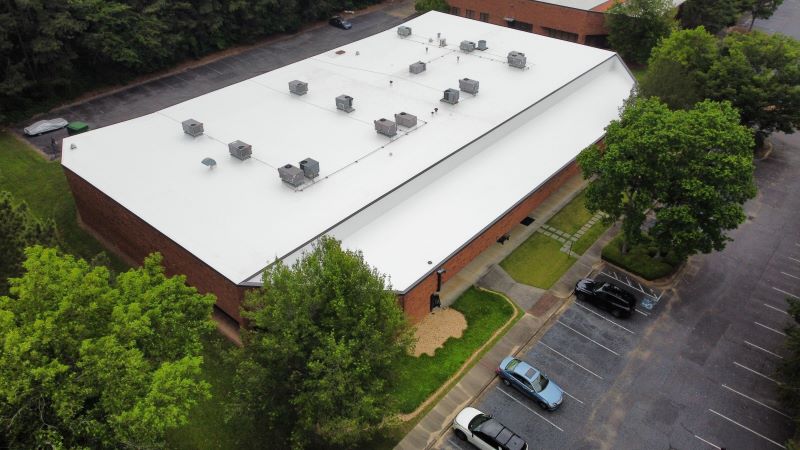As the summer sun beats down on your commercial building, your roof can heat up significantly, impacting your building’s energy efficiency and the comfort of its occupants. Understanding why your roof gets hot and the potential consequences can help you take steps to mitigate its effects. Here’s a look at why commercial roofs get hot in the summer and what you can do about it:
1. Roof Color and Material: The color and material of your roof play a significant role in how much heat it absorbs. Dark-colored roofs absorb more heat than light-colored roofs because they absorb more sunlight. Additionally, certain roofing materials, such as asphalt and metal, are more prone to absorbing and retaining heat than others.
2. Solar Radiation: Solar radiation, or sunlight, is a major factor in heating up your roof. The sun’s rays can penetrate and heat up the roofing material, causing the temperature of your roof to rise. This effect is more pronounced on sunny days with clear skies.

3. Heat Absorption and Retention: Once your roof absorbs heat from the sun, it can retain that heat for an extended period, even after the sun has set. This can lead to higher indoor temperatures, especially if your building is not properly insulated or ventilated.

4. Impact on Energy Efficiency: A hot roof can significantly impact the energy efficiency of your building. The heat absorbed by your roof can transfer into your building, forcing your cooling systems to work harder to maintain a comfortable temperature. This can lead to increased energy consumption and higher utility bills.
5. Mitigating Heat Gain: There are several strategies you can employ to reduce heat gain and keep your commercial roof cooler in the summer. One effective method is to use reflective roofing materials or coatings that can reflect sunlight and reduce heat absorption. Proper insulation and ventilation can also help prevent heat transfer into your building.

6. Mitigating Heat Gain: There are several strategies you can employ to reduce heat gain and keep your commercial roof cooler in the summer. One effective method is to use reflective roofing materials or coatings that can reflect sunlight and reduce heat absorption. Proper insulation and ventilation can also help prevent heat transfer into your building.
7. Professional Roof Inspection: To assess the impact of heat on your commercial roof and identify any potential issues, it’s important to schedule a professional roof inspection. A roofing expert can evaluate the condition of your roof, recommend any necessary repairs or maintenance, and suggest ways to improve its energy efficiency.

In conclusion, understanding why your commercial roof gets hot in the summer and the potential consequences can help you take proactive steps to mitigate its effects. By choosing the right roofing materials, implementing energy-efficient strategies, and scheduling regular roof inspections, you can help keep your commercial roof cooler and extend its lifespan.




